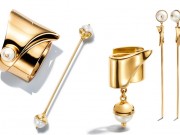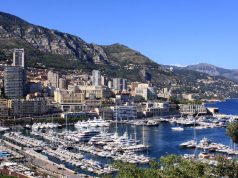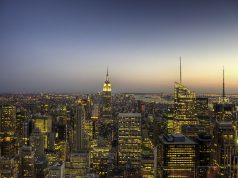Once upon a time in a land far, far away, a city so magnificent was born, that it went on to inspire the worlds most beloved tales of princes and princesses, imagination and happily ever after. A city of opulent palaces, whimsical art, majestic architecture, and colourful rulers. Russia’s fascinating ‘Window on the West’, St. Petersburg. One of Europe’s most significant cities, St. Petersburg has bustled with life, mystery and intrigue since it was founded by resolute Tsar Peter the Great in 1703. Peter was one of the world’s finest dreamers, and his vision of building a kingdom to challenge the splendor of any other, translated impeccably into a land rich in magic, and more importantly, palaces.
St. Petersburg is an utterly captivating tourist destination. It has a remarkable number of sights and is filled with an abundance of history. Many visitors seek the romance of the snowy winter months, but there is little more spellbinding than gazing upon a Russian palace under the White Nights of summer. The White Nights are a brief period of dazzling magic where the sun crawls toward the horizon but never fully sets as a result of the city’s very northern location, this leaves the streets lustrous and saturated in a pearlescent glow.
While wandering the stone city bisected by canals and spotted with cafes and shops, the true essence of St. Petersburg will be found at the palaces. There are a number of palaces 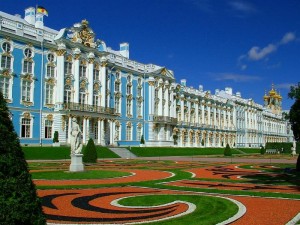 and structures of great historical significance to the country, but the three that cannot be missed are Catherine Palace, the Peterhof Palace and the mother of all dreamy homesteads, the Winter Palace.
and structures of great historical significance to the country, but the three that cannot be missed are Catherine Palace, the Peterhof Palace and the mother of all dreamy homesteads, the Winter Palace.
Catherine Palace was originally built in 1710 as a summertime retreat by Peter the Great for his wife Catherine. It was given an elaborate makeover by their daughter Elizabeth with the help of architect and Late Baroque style genius, Francesco Bartolomeo Rastrelli. While Elizabeth loved the palace and was primarily responsible for its splendor, it was Empress Catherine II who enjoyed it the most. Located a quick 25km jaunt outside of the heart of St. Petersburg, the incredible structure spans 1000 feet. Adorned with gold accents, its colour is reminiscent of a cloudless summer sky. Catherine was notorious for throwing elaborate costume parties at the palace. She had over 15,000 dresses at the home and never wore a single one twice. Catherine’s palace is the idealistic example of Russian baroque. It is now a notorious tourist hotspot, and one of the countries most celebrated museums. The palace holds arguably the most exquisite ballroom in the world. Covering 9,000 square feet, the room is washed in light from two tiers of classic Rastrellian style windows, and was appropriately known as the Gallery of Light in its glory years. The ballroom’s ceiling is a work of art, literally, it is a monumental, allegorical painting by Venetian Guiseppe Valeriani, titled The Triumph of Russia. Don’t be shy, wear a ball gown for your tour and try to imagine how fine the space would have been lit with its 1,200 candles and filled with the classic music of an 80 musician orchestra. Similarly amazing is the Amber Room, a historical phenomenon. Once known as the Eighth Wonder of the World the Amber Room is just that, all amber. The original panels were traded to Peter the Great from Prussian King Friedrich Wilhelm for eight Russian soldiers; however, the panels went missing after the Nazi invasion and have been one of the worlds most hunted treasures ever since. The room was recreated in 2003 with more than a tonne of amber, from the sweetest shade of honey to a seductively burnt orange. A full day should be set aside to discover all of the brilliance behind Catherine Palace and its remarkable surrounding gardens.
Peterhof – it couldn’t have been dreamed more perfectly. The ‘Second Versailles’ was Peter the Great’s most revered imperial residence and still amazes tourists and architects alike. Inspired by Versailles and challenged by Peter, it consists of three palaces, a superb series of parks and numerous sets of fountains. Peterhof was unrivalled, a Russian 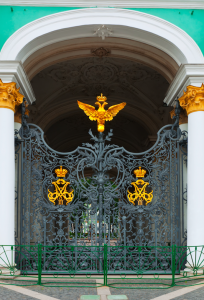 treasure, until of course World War II intervened. Peterhof was at the frontline when the Siege of Leningrad occurred. It was diminished to ruins by the end of the war and has been in a state of refurbishment for over sixty years. Peterhof is located on the coast of Finland, 30km outside of the city and is accessible by sea or land. If coming by sea, highly recommended for the grandest entrance, you will arrive at the Lower Park. Designed in classic French style with a formal baroque flair, the garden once hosted spectacular parties illuminated by 10,000 candles. Areas of the park offer a glimpse at Peter’s more playful side with trick fountains that are brought to life when guests step on a hidden lever or stone. The eastern part of the Lower Park is where Peter’s first residence on the property is, he lived here during construction – it is called Monplaisir, meaning “my pleasure”, and is a modest Dutch style mini palace. The western part of the park is where Marly Palace and the Hermitage Pavilion are. Marly Palace was designed to be an intimate retreat on the property; the Hermitage was generally used as a banqueting hall. The Great Palace sits in the middle of all of this grandeur with the upper Park and main gates behind it. Most guests only devote a half day to visit Peterhof, this simply is just not enough time to take all of the wonders in.
treasure, until of course World War II intervened. Peterhof was at the frontline when the Siege of Leningrad occurred. It was diminished to ruins by the end of the war and has been in a state of refurbishment for over sixty years. Peterhof is located on the coast of Finland, 30km outside of the city and is accessible by sea or land. If coming by sea, highly recommended for the grandest entrance, you will arrive at the Lower Park. Designed in classic French style with a formal baroque flair, the garden once hosted spectacular parties illuminated by 10,000 candles. Areas of the park offer a glimpse at Peter’s more playful side with trick fountains that are brought to life when guests step on a hidden lever or stone. The eastern part of the Lower Park is where Peter’s first residence on the property is, he lived here during construction – it is called Monplaisir, meaning “my pleasure”, and is a modest Dutch style mini palace. The western part of the park is where Marly Palace and the Hermitage Pavilion are. Marly Palace was designed to be an intimate retreat on the property; the Hermitage was generally used as a banqueting hall. The Great Palace sits in the middle of all of this grandeur with the upper Park and main gates behind it. Most guests only devote a half day to visit Peterhof, this simply is just not enough time to take all of the wonders in.
The Winter Palace – its name stirs thoughts of thick couture winter coats and huddling with a lover under a Russian night’s snowfall. It makes you think of romance in that Cinderella, glass slipper kind of way. Of course as it seems to go with all things we want to be left in a state of perfection in our minds, the Winter Palace has a dark past and became a place of massacre and terror. History buffs will immediately think of Bloody Sunday and the February Revolution – major events in history. Today, it is the sight of the State Hermitage Museum. The first thing you will notice is the palace’s gargantuan size, it wasn’t built this way to house a million princesses and their superb gown collections, it was designed to reflect the power of Imperial Russia and be a clear indicator not to challenge the might of the great nation. It was from this palace that Peter II ruled one sixth of the world’s landmass.
Beyond the palace the sight includes the buildings of the Small, Old and New Hermitages, the Hermitage Theatre and the Auxiliary House. The Hermitage began as a private art 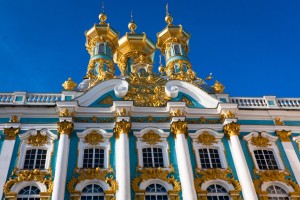 collection by Empress Catherine II in the 18th century and became one of the largest museums in the world in the 20th century. It features an incredible variety of pieces from every culture and era, including those by renowned artists Matisse, Rembrandt and Picasso. The last count put the collection at over three million items and strolling through the 350 rooms would be a walk of 10km’s. This may be a bit too ambitious for some travelers, break it down, do your research, and seek out those must-sees first. For those less interested in the art pieces, not to worry, the buildings themselves will have you overstimulated and overly amazed the duration of your visit.
collection by Empress Catherine II in the 18th century and became one of the largest museums in the world in the 20th century. It features an incredible variety of pieces from every culture and era, including those by renowned artists Matisse, Rembrandt and Picasso. The last count put the collection at over three million items and strolling through the 350 rooms would be a walk of 10km’s. This may be a bit too ambitious for some travelers, break it down, do your research, and seek out those must-sees first. For those less interested in the art pieces, not to worry, the buildings themselves will have you overstimulated and overly amazed the duration of your visit.
Your trip to St. Petersburg will be an investment to further dreams, inspire imagination and instill wonder in your life. In jeans and a t-shirt you’ll feel like a princess even just eating an ice cream cone while strolling through the grounds at one of these magnificent palaces. Your time in the great royal city will also be one of your most profound history lessons. St. Petersburg promises to be a completely magical adventure. And who knows, you might just meet your prince charming there.
By: Chelsea Forman NICHE Magazine Summer 2013









